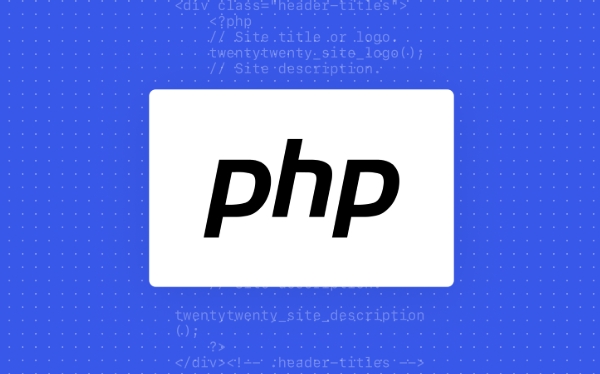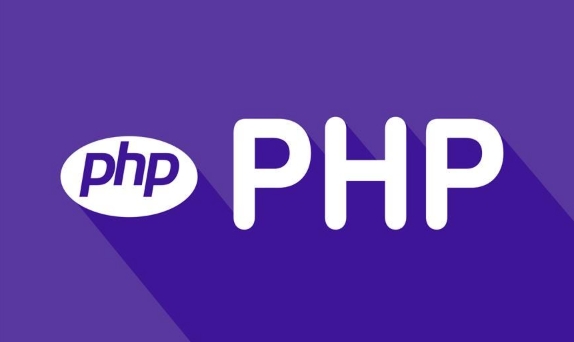There are three main choices for PHP frameworks suitable for use with React: 1. Laravel is the mainstream first choice, suitable for new projects, providing strong routing, Eloquent ORM, out-of-the-box functions and good ecology, and high development efficiency; 2. Symfony is suitable for large or existing systems integration, with high modularity, strong standardization, and suitable for long-term maintenance; 3. Lumen/Slim is a lightweight framework suitable for small projects or resource-constrained environments, with fast startup, less occupancy, but requires more infrastructure to be handled by yourself. Selection should be comprehensively considered based on project scale, team experience and architectural needs.

If you are looking for a PHP framework suitable for use with React, there are actually two core points: API development is friendly, clear structure, and easy to maintain . As the front-end framework, React is responsible for interface interaction, while the PHP back-end mainly assumes the role of data interface and business logic processing. Therefore, when choosing a framework, the focus should be on whether its API support is perfect, how effective it is in development, and whether the ecosystem is active.

The following is analyzing which PHP frameworks are more suitable for use with React from several dimensions encountered in actual development:

Laravel: The most mainstream choice
Laravel is one of the most popular PHP frameworks at present. It is very suitable for building RESTful APIs and is also a commonly used backend partner for React front-end.
-
Distinctive advantages :

- It comes with a powerful routing system, which makes the writing interface very convenient
- Eloquent ORM is simple and easy to use, and the database operation is easy
- Provides out-of-the-box authentication mechanism, queue, cache and other common functions
- Active community, complete documentation, easy to find answers when encountering problems
-
Excellent development experience :
- Artisan command line tool can quickly generate controllers, models, migration files, etc.
- Token authentication can be quickly implemented with Passport or Sanctum
- Using the Resource controller can unify the output format, making it easier to call React
If you are working on a new project and want to get started quickly, Laravel is almost the first choice. Especially when you need a stable and scalable backend to support React.
Symfony: Suitable for large projects or existing system integration
Symfony is more inclined to enterprise-level applications. It is not as "one-stop" as Laravel, but it is more flexible and highly modular.
-
Applicable scenarios :
- The existing Symfony project wants to introduce React
- Projects that require high performance requirements and require fine control of components
- The team has some experience and does not want to be "kidnapped" by the framework
-
Advantages include :
- Strong standards and specifications, suitable for long-term maintenance
- Components can be pluggable and can be freely combined according to requirements
- FOSRestBundle NelmioApiDocBundle is great for building API documentation and routing management
Although the learning curve is slightly steeper than Laravel, it is also a good choice if the project is larger, or if you are used to Symfony's workflow.
Lumen/Slim: Lightweight API framework
If you only need a lightweight backend to work with React and don't want too heavy frameworks, Lumen (Laravel's microframework) or Slim is a good choice.
-
Suitable for scenarios :
- Small project or MVP (minimum viability product)
- A performance-sensitive and resource-limited environment
- There is a front-end architecture, only simple interface support is required
-
Features :
- Start faster and take up less resources
- Don't have too many functions built in, you need to build the basic structure yourself
- Suitable for developers who understand PHP and want to maintain a streamlined structure
Although this type of framework is highly flexible, it also means that you have to deal with many details yourself, such as middleware, error handling, authentication, etc. If your team is not very staffed and pursues development efficiency, it may be more suitable for Laravel.
Practical matching suggestions
No matter which framework you choose, the key to matching it with React lies in the design idea of ??separation of front and back ends:
- The backend only provides JSON interface and does not perform page rendering.
- The front-end requests data through fetch/axios to perform state management
- The CORS setting must be correct to ensure that there are no cross-domain problems in local debugging
- Interface paths are recommended to add
/apiprefixes to facilitate management and proxy configuration.
In addition, you can also consider placing the static files built by React in the public directory of the PHP project and serving them externally with the same domain name, which avoids the hassle of deploying multiple services.
Overall, Laravel is the first choice for most people because it takes into account both feature richness and development efficiency; if the project is larger or already has a Symfony foundation, you can use Symfony; while for lightweight projects, Lumen or Slim can be considered.
Basically all is it, which depends on the project type and team familiarity.
The above is the detailed content of best php framework to use with react. For more information, please follow other related articles on the PHP Chinese website!

Hot AI Tools

Undress AI Tool
Undress images for free

Undresser.AI Undress
AI-powered app for creating realistic nude photos

AI Clothes Remover
Online AI tool for removing clothes from photos.

Clothoff.io
AI clothes remover

Video Face Swap
Swap faces in any video effortlessly with our completely free AI face swap tool!

Hot Article

Hot Tools

Notepad++7.3.1
Easy-to-use and free code editor

SublimeText3 Chinese version
Chinese version, very easy to use

Zend Studio 13.0.1
Powerful PHP integrated development environment

Dreamweaver CS6
Visual web development tools

SublimeText3 Mac version
God-level code editing software (SublimeText3)

Hot Topics
 What are some best practices for versioning a PHP-based API?
Jun 14, 2025 am 12:27 AM
What are some best practices for versioning a PHP-based API?
Jun 14, 2025 am 12:27 AM
ToversionaPHP-basedAPIeffectively,useURL-basedversioningforclarityandeaseofrouting,separateversionedcodetoavoidconflicts,deprecateoldversionswithclearcommunication,andconsidercustomheadersonlywhennecessary.StartbyplacingtheversionintheURL(e.g.,/api/v
 How do I implement authentication and authorization in PHP?
Jun 20, 2025 am 01:03 AM
How do I implement authentication and authorization in PHP?
Jun 20, 2025 am 01:03 AM
TosecurelyhandleauthenticationandauthorizationinPHP,followthesesteps:1.Alwayshashpasswordswithpassword_hash()andverifyusingpassword_verify(),usepreparedstatementstopreventSQLinjection,andstoreuserdatain$_SESSIONafterlogin.2.Implementrole-basedaccessc
 What are the differences between procedural and object-oriented programming paradigms in PHP?
Jun 14, 2025 am 12:25 AM
What are the differences between procedural and object-oriented programming paradigms in PHP?
Jun 14, 2025 am 12:25 AM
Proceduralandobject-orientedprogramming(OOP)inPHPdiffersignificantlyinstructure,reusability,anddatahandling.1.Proceduralprogrammingusesfunctionsorganizedsequentially,suitableforsmallscripts.2.OOPorganizescodeintoclassesandobjects,modelingreal-worlden
 What are weak references (WeakMap) in PHP, and when might they be useful?
Jun 14, 2025 am 12:25 AM
What are weak references (WeakMap) in PHP, and when might they be useful?
Jun 14, 2025 am 12:25 AM
PHPdoesnothaveabuilt-inWeakMapbutoffersWeakReferenceforsimilarfunctionality.1.WeakReferenceallowsholdingreferenceswithoutpreventinggarbagecollection.2.Itisusefulforcaching,eventlisteners,andmetadatawithoutaffectingobjectlifecycles.3.YoucansimulateaWe
 How can you handle file uploads securely in PHP?
Jun 19, 2025 am 01:05 AM
How can you handle file uploads securely in PHP?
Jun 19, 2025 am 01:05 AM
To safely handle file uploads in PHP, the core is to verify file types, rename files, and restrict permissions. 1. Use finfo_file() to check the real MIME type, and only specific types such as image/jpeg are allowed; 2. Use uniqid() to generate random file names and store them in non-Web root directory; 3. Limit file size through php.ini and HTML forms, and set directory permissions to 0755; 4. Use ClamAV to scan malware to enhance security. These steps effectively prevent security vulnerabilities and ensure that the file upload process is safe and reliable.
 How can you interact with NoSQL databases (e.g., MongoDB, Redis) from PHP?
Jun 19, 2025 am 01:07 AM
How can you interact with NoSQL databases (e.g., MongoDB, Redis) from PHP?
Jun 19, 2025 am 01:07 AM
Yes, PHP can interact with NoSQL databases like MongoDB and Redis through specific extensions or libraries. First, use the MongoDBPHP driver (installed through PECL or Composer) to create client instances and operate databases and collections, supporting insertion, query, aggregation and other operations; second, use the Predis library or phpredis extension to connect to Redis, perform key-value settings and acquisitions, and recommend phpredis for high-performance scenarios, while Predis is convenient for rapid deployment; both are suitable for production environments and are well-documented.
 What are the differences between == (loose comparison) and === (strict comparison) in PHP?
Jun 19, 2025 am 01:07 AM
What are the differences between == (loose comparison) and === (strict comparison) in PHP?
Jun 19, 2025 am 01:07 AM
In PHP, the main difference between == and == is the strictness of type checking. ==Type conversion will be performed before comparison, for example, 5=="5" returns true, and ===Request that the value and type are the same before true will be returned, for example, 5==="5" returns false. In usage scenarios, === is more secure and should be used first, and == is only used when type conversion is required.
 How do I perform arithmetic operations in PHP ( , -, *, /, %)?
Jun 19, 2025 pm 05:13 PM
How do I perform arithmetic operations in PHP ( , -, *, /, %)?
Jun 19, 2025 pm 05:13 PM
The methods of using basic mathematical operations in PHP are as follows: 1. Addition signs support integers and floating-point numbers, and can also be used for variables. String numbers will be automatically converted but not recommended to dependencies; 2. Subtraction signs use - signs, variables are the same, and type conversion is also applicable; 3. Multiplication signs use * signs, which are suitable for numbers and similar strings; 4. Division uses / signs, which need to avoid dividing by zero, and note that the result may be floating-point numbers; 5. Taking the modulus signs can be used to judge odd and even numbers, and when processing negative numbers, the remainder signs are consistent with the dividend. The key to using these operators correctly is to ensure that the data types are clear and the boundary situation is handled well.







